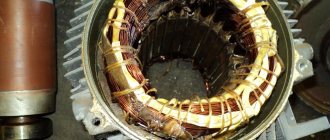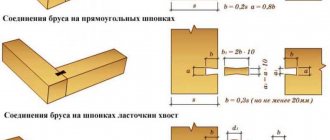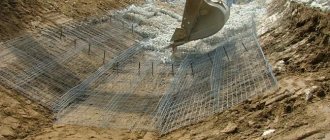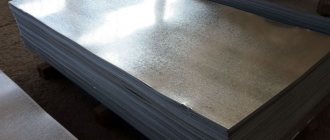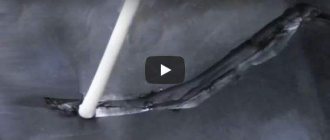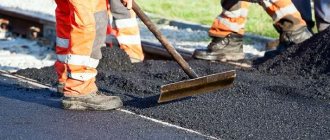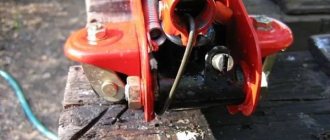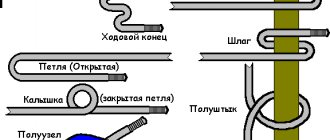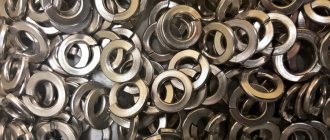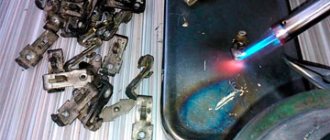After mowing lawns or weeding fields, large piles of grass appear that need somewhere to go.
And given that the grass is constantly growing and after a while begins to produce seeds, it must be disposed of so that it cannot spread the seeds and produce new shoots.
This is especially true for weeds, the seeds of which remain viable for many months after the plant is separated from the ground.
After reading this article, you will learn: what to do with mowed lawn and regular grass in your dacha, what to do with it and how you can use (recycle) it for the benefit of your garden and more.
Why do you need to get rid of grass clippings?
Despite the fact that mowed grass is a good fertilizer , it cannot always be left on a field or lawn, because it spoils the appearance of the area, and its seeds remain viable even several months after the grass is separated from the roots.
Stacked vegetation poses a serious hazard if left unattended. There is a process of active rotting inside the stack, which causes the temperature to rise greatly, which can lead to a fire.
In addition, a dried haystack is an object of increased fire danger, because it flares up from any spark, so it is necessary to store the grass only in specially prepared places.
Device
At the moment, there is a wide variation in the choice of shredder models, but despite this, their design principle is similar, the difference lies only in the size of the device and optional features.
A standard shredder has the following structure:
- Metal body. An important condition for a shredder is its reliability and durability, and therefore heavy-duty metals are used for its manufacture. Polymers can also be used to produce the body of the unit. Often the body is mounted on a frame equipped with wheels. This is done to make it easier to move the device around the land plot.
- The heart of a shredder is its motor. This can be an internal combustion engine or an electric motor.
- The grinding process is carried out through a cutting mechanism powered by a drive.
- To make loading grass and leaves a simple matter, the unit is equipped with a loading bowl or, as it is also called, a loading hopper. As a rule, the bowl has the shape of a funnel, which makes it much easier to load plant debris into the shredder.
- The device also has a receiving hopper where the processed plant mixture is supplied. You can attach the bag to the receiving hopper, so you don’t have to waste time on arranging the mixture, or you can directly throw the mixture away during processing in the areas of your garden you need. There are models that allow you to adjust the direction and height of spreading the crushed mixture, which is also very convenient and saves time on gardening work.
Why shouldn't it be thrown into trash containers?
Most enterprises that provide services for the disposal of household solid waste (MSW) stipulate in advance in the contract with residents of private houses a ban on throwing out clippings of grass and weeds into containers.
After all, landfills are used by law to dispose of waste, the operation of which is expensive.
Therefore, each company pays for the reception of solid waste depending on the actual volume , which means that the removal of grass causes them serious losses.
Calling a separate vehicle to remove green mass along with paying for landfill services will be expensive, which is why few people agree to dispose of grass in this way.
Question answer
Which shredder is better, electric or gasoline?
It all depends on how you are going to use it. If for country work, on a small plot of no more than six to seven acres, then it would be better to choose an electric one. If the unit is needed for a farm or large areas of land, then a gasoline unit will be more convenient.
Can branches be processed in a grass shredder?
It is forbidden. It is necessary to operate the shredder based on its technical capabilities.
Is a herb grinder used to process grain?
Yes, many models provide for chopping, in addition to grass, hay, dead wood and grain. But this needs to be clarified in the technical characteristics of the unit you are interested in.
What is the difference between milling and disk shredders?
The milling machine is capable of handling a large volume of work and can grind branches. Disc is intended exclusively for grass and only to the extent specified in the technical specifications.
Is it possible to adjust the fractions of the processed mixture in the shredder?
Yes, many modern models provide for setting fractions, which is very convenient if you need to sort ground grass or grain for different purposes.
Who handles removal and disposal?
If you cannot dispose of mowed or torn vegetation yourself, including any weeds, then you need to contact those who provide such services .
This is done by enterprises, one of whose activities is the removal and disposal of construction waste, solid waste, because they have contracts with landfills.
They may also be agricultural or processing plants that use collected vegetation to make humus, fuel pellets, or other products.
Can lawn clippings be used?
Mown lawn grass is an excellent basis for creating fertilizer for plants in the garden and vegetable garden.
Experts recommend setting up free “production” of natural and harmless organic fertilizer on your site.
Freshly cut green grass is rich in minerals and vitamins. It contains a lot of nitrogen and iron, phosphorus and potassium . Grass clippings can be used to create fertilizer in various ways.
Do not work with grass affected by fungal or other diseases, with elements of rot, or with the presence of pests.
Prices for services
The cost of this service depends on factors such as:
- landfill tariffs for solid waste disposal;
- distances from the place where the collected grass is stored to the landfill;
- loading method (independent, with the help of loaders or mechanized);
- volume of vegetation collected and intended for disposal;
- additional services (mowing, collecting or loading);
- number of requests for this service.
Enterprises providing waste removal services are ready to work with grass, but at the same prices as solid waste removal, and depending on the volume of the container .
A small container (8 m3) without the involvement of loaders will cost 3–7 thousand rubles, depending on the city and the distance to the landfill.
A large container (30–40 m3) will cost 20–40 thousand rubles. The services of loaders or loading equipment will increase the cost of removal and disposal by 1.5–3 times.
Businesses that provide grass cutting services also remove grass, but prefer not to remove vegetation that someone else has mowed . However, you can also come to an agreement with them. In most cases, the price for removal is 200–900 rubles per 100 m2.
You can read more about this, as well as the approximate cost of such services, here.
Choosing the right one
The most important thing you need to pay attention to when purchasing a unit is the power supply and power. Decide whether you need an easier-to-use, but mains-dependent, electric shredder or a heavier, but field-operating gasoline shredder.
Also examine the grinding system of the device. It can be milling or disk. The first option is more expensive, but has a wider scope of application and is characterized by high reliability and durability. The second one is cheaper, but is not able to cope with a large volume of work, and if branches get into it, the device will not be able to cope with them and may even fail.
Is it possible to give away vegetation from a lawn at a summer cottage for free?
Mown grass, as well as pulled out weeds, can be given to owners of agricultural farms or personal plots . However, there is a high probability that they will be very picky about the material they receive, even for free.
After all, if they are interested in forbs that can be used as feed for cows or other livestock, then they will first try to find out where this vegetation was mowed, since it may contain plants that pose a threat to animals.
Any grass (with the exception of eared weeds) will be welcome by those who use it as bedding for large animals or for making fuel . In both cases, the collected vegetation will first be dried to stop the decay processes, then stored in specially prepared places.
If they are going to use it as fuel, then lawn grass and even eared weeds, not suitable for any other use, but received for free, will be gladly taken.
What else is worth paying attention to
When choosing a shredder, you should pay attention to the following points:
- How convenient is the receiving hopper? Different models offer their own receiver design: it can be located at an angle or vertically. Premium models allow you to adjust the position of the receiver. Choose the option that will be most convenient for you for your work.
- The kit should include a pusher, which greatly facilitates the work of loading plant debris.
The lack of a pusher in the model can lead to serious injury because pushing grass into the shredder yourself is dangerous.
- If you are looking for a unit that will make your work as easy as possible, then pay attention to models that are equipped with guide ribs. At the same time, some models have a cross-shaped or slot-shaped receiver - such technical features improve the operation of the unit and make it easier to load large volumes of grass, as well as branchy branches.
- Mid- and premium-class options are usually equipped with a function for differentiating the output raw materials. This becomes very convenient if, for example, you need one fraction of raw materials for compost, and another for the formation of pellets for stove heating.
- Removable bags and a translucent hopper for waste grass can be considered as useful additions.
In addition, many modern grinders are equipped with a mechanical system for automatically feeding waste raw materials into the hopper. In this case, the work is done extremely simply, you just need to lower the plant debris into the funnel, and the device will do the rest for you.
A useful feature is also the ability to adjust the speed of rotation of the knives (or line), this becomes especially important when you need to adjust the type of raw material being processed.
How to recycle it profitably?
Proper disposal of green mass will not only provide benefits, but also bring serious savings , because from mowed or plucked vegetation you can make:
- good natural fertilizer for the garden or vegetable garden;
- mulch;
- solid and gaseous fuels;
- various building materials;
- natural fabric.
How to use it in the garden as fertilizer?
Any vegetation, after separation from the root and cell death, is exposed to various microorganisms that utilize dead organic matter.
The waste products produced by these microorganisms are humic substances, which serve as food for plant roots. This transformation is part of the complex process of the cycle of organic substances in nature.
In addition, there is a process of natural soil regeneration, during which the soil not only receives humic substances, but also improves its structure, thereby increasing the soil’s ability to pass water.
These processes underlie the production of any fertilizers from green mass , so the difference between the natural and artificial course of these processes lies in what a person chooses:
- place where plant matter rots;
- what additional components will be added to it;
- speed of decay of organic matter;
- place for introducing humic substances and fragments that improve soil structure;
- intensity of the soil regeneration process.
The most popular fertilizers that are obtained from grass, including forbs and weeds, are :
- compost, including liquid;
- humus (humus);
- mulch;
- liquid and dry fertilizer.
Compost is a mixture of grass with various additional materials that improve the physical and chemical properties of the fertilizer.
After complete rotting, it turns into humus, which fills the soil with nutrients and improves the structure of the soil.
The time for complete decay is tens of months , so when you need to get fertilizer faster, liquid compost is made in a barrel.
Liquid top dressing is partially or completely rotted liquid compost, which is infused in barrels. It does not change the structure of the soil, but only saturates the soil with humic substances.
Dry fertilizer is fresh or partially rotted vegetation that is placed in holes or trenches before planting seeds or seedlings.
Mulch
Grass mulch is grass spread on the surface of the soil that performs several important functions.
This mulch is used to:
- reduce moisture loss due to evaporation;
- protect plant roots from heat and cold;
- fill the soil with nutrients;
- suppress weeds;
- protect plants from slugs;
- improve soil structure.
Any green mass mowed or otherwise separated from the ground is suitable for this use, with the exception of weeds with already ripened seeds.
After all, mulching with such weeds will lead to their rapid spread in the area and suppression of cultivated plants. In addition, both fresh or dry vegetation and compost of any degree of decay are suitable .
However, it must be taken into account that bacteria that process organic matter actively consume nitrogen and release various acids, which causes the pH parameter to decrease, that is, the soil becomes more acidic.
Therefore, when using fresh or dry green mass, such mulch must be sprinkled with ash or lime to reduce acidity and treated with nitrogen fertilizers, for example, urea or amophoska.
Also, any plants damaged by pests or diseases should not be used for mulching, because from the mulch pests or diseases can spread to cultivated species and damage them.
If mulch is applied at the beginning of summer, then abundant watering is enough so that by the next season it will completely rot and turn into fertilizer. If mulching with grass is carried out in mid-summer or later, then it is advisable not only to water them abundantly, but also to treat them with bacterial preparations .
Production of solid and gaseous fuels
Plant cells are made up of various carbohydrates, so they are good sources of energy. They can be used to produce gaseous biofuel in digesters, where they become food for methane-producing bacteria.
After purifying biogas from impurities, the proportion of methane in it increases to 70–98%, that is, the finished product will be suitable for use in any gas devices.
To produce solid fuel, vegetation is dried and pressed into grass pellets, which in their calorific value are comparable to wood pellets and briquettes and can easily replace firewood or coal in automatic solid fuel boilers.
If you have access to other free or very cheap carbohydrates, such as any type of excrement or shredded wood, these can be mixed with grass to make fuel pellets.
Use in construction
Dried vegetation, most often straw (due to its tubular structure), has been used since ancient times to make insulating and load-bearing building materials .
The basis of such materials is made up of hard dried or dried plant stems and clay.
By increasing the amount of clay and adding sand to the mixture, adobe is obtained, which is used for low-rise construction.
Distinctive features of adobe are:
- environmental friendliness;
- low thermal conductivity;
- high vapor permeability;
- high noise absorption;
- low manufacturing cost.
Adobe also has disadvantages:
- in an environment with high humidity it quickly loses strength and becomes limp;
- low load-bearing capacity, therefore suitable only for the construction of walls of one-story houses with wooden floors.
These same advantages and disadvantages are inherent in grass insulation, because in it clay acts as a binder.
In addition, grass insulation attracts various rodents, so they necessarily contain lime , which not only prevents the appearance of these animals, but also protects the plant filler from any diseases.
Despite the fact that the basic parameters of such insulation are noticeably worse than those of modern heat and sound insulating materials, it is in demand where it is not possible to use normal insulation or sound insulation, and it is necessary to reduce heat loss and noise levels.
Therefore, the main advantages of such insulation are low cost (everything you need is under your feet) and environmental friendliness (they are made from natural materials).
In addition,
the roofs of village houses were made from straw , because there was no access to slate, tiles or other materials.
Even today, thatched roofs are popular among lovers of eco-friendly homes and fans of the use of natural materials.
Such a roof is very sensitive to open fire, but compliance with even basic fire safety rules reliably protects against fire. Also, the finished roof can be impregnated with fire retardants for wood, which will make it much less sensitive to open fire.
Making natural fabric
Clothing made from plant materials has been known for many millennia, because people did not always have the opportunity to use animal skins to protect themselves from heat or cold, and without clothing their chances of survival were sharply reduced.
Linen and cotton are still the most popular materials for sewing many types of clothing.
Hard species of forest and meadow grasses are best suited for making clothing , such as:
- nettle;
- chicory;
- linen;
- hemp (growing hemp is prohibited in the Russian Federation, because it is classified as a drug);
- cornflower;
- sow thistle;
- nightshade.
To make fabric from vegetation, do the following:
- select long healthy stems;
- the selected material is dried;
- dried vegetation is crushed and crushed to separate the fibers and obtain weight;
- widely cleaned of solid fragments and dust, then ground (smeared) to completely separate the fibers from each other;
- the peeled fiber is scratched in order to separate all the fibers along the length (the shortest ones are called rags, the middle ones are called pachesya or vychesk, and the longest ones are called tow).
Next, a thread is spun from the separated fibers, and from the finished thread, in turn, a fabric is woven .
If necessary, either individual threads or the finished fabric are dyed.
Despite the fact that homemade grass fabric is inferior in many respects to the material that can be bought in a store, the fabric made by yourself is to some extent unique.
Advantages and disadvantages
Disposal of lawn grass in these options has its advantages and disadvantages.
pros:
- the ability to obtain fertilizer using your own resources and means – without financial costs;
- availability and regular replenishment;
- natural organic matter is harmless to plants;
- It loosens the soil better than other fertilizers, improving air exchange;
- when combined with manure, lawn grass in the finished compost will bring the required amount of nitrogen to the plant;
- the soil structure improves significantly - if the plants are chopped coarsely;
- soil regeneration occurs from the use of grass compost - if the components are crushed as finely as possible;
- Widely used (for fertilizer) in gardening and vegetable gardens;
- the question of selling the mowed grass after mowing the lawn disappears - everything goes to work.
The disposal method does not require additional complex “nuances” to the rotting conditions, and it can be used in areas of any size.
Minuses:
- You should use only healthy grass without rot or fungus;
- to create this or that fertilizer, you need to adhere to the required proportions in the laying of the components;
- the fertilizer matures within certain time limits that must be observed.
If a country house does not have a garden and a vegetable garden, but only has landscape design, then it is advisable to transfer the mown lawn grass for disposal to farmers who raise sheep, goats or rabbits.
Production of herbal flour - technology, equipment, cost
Herbal vitamin flour is a healthy mixture processed using special technology. Can be used as a complete feed for livestock or added as a supplement. It contains valuable herbal components: vitamins, carotene, protein.
The products are made not only in the form of flour, but also in granules. Valued by owners of farming and agricultural organizations. They purchase goods in large quantities, since all animals need a complete feed mixture.
But in Russia, the production of herbal flour is still poorly developed. Therefore, this activity is profitable. But not many entrepreneurs know how to create it.
After all, without a competent, organized system, nothing will work, and all costs will be in vain.
In order for the product to be in demand and the investment to quickly pay off, you need to purchase good equipment and high-quality raw materials. Where to start: open a large factory or a mini enterprise? We’ll tell you exactly what you need and how much it costs in the article.
Operating principle of the granulator
The production of granules is a process used in many industries, in particular for the processing of polymers. In large-scale production, an extruder is used to create, for example, pipes from polymers.
With the help of such a device, the production of granules is automated and quite easy. However, due to the high cost of this device, many people prefer to build it themselves.
The principle of operation of a self-made granulator is not much different from the factory version - special rollers press the crushed raw materials through the holes of the matrix.
The granulator consists of the following elements:
- Support and housing;
- Matrix with cone-shaped holes;
- Toothed rollers or auger;
- Tin sheets;
- Reservoir for raw materials;
- Electric motor;
- Gearbox;
- Shaft.
Before you start using the granulator, you should familiarize yourself with the principle of its operation by studying the instructions
It is most convenient to buy the matrix, rollers and screw separately, since their manufacture, as a rule, requires special machines and skills in handling them. These items are sold at a low price. You can also use bulletin boards.
Is it really possible to do VTM yourself?
On farming forums you can find advice on how to prepare TMV at home by grinding grass or alfalfa. However, such a literal interpretation of the concept of “herbal flour” has nothing to do with industrial production, notes Doza-Gran commercial director Pavel Kunin.
– Among the stages of production of vitamin-herbal flour are mowing grass or alfalfa, drying, grinding, granulating, cooling and packaging. Even with small volumes of VSM production, you need a production line or at least a machine that produces granules. They cannot be made using a homemade method.
DIY feed granulators: assembly steps
The main thing in creating a household feed granulator is to draw up the drawings correctly. When you have everything you need at hand, you can start assembling. The channel will help you create this mechanism: “The Barber of the Lame Josip”, where you will find excellent tips on home-made production of various devices.
We break it down into the following stages:
- We weld the base for the granulator. It must be strong enough to withstand all vibrations of the device. Many people attach wheels to it for ease of movement. And if you wish, you can leave it motionless.
- From the corners you can weld a frame that will secure the housing and the electric motor.
- The body of the granulator is made of tin pipes or buckets. The body is divided into two parts. In the upper part, the raw material is fed to a screw (based on the principle of a meat grinder) or to a flat matrix. And in the lower part there are already granules.
- To remove granules, a chute is installed in the lower part of the housing.
- A gearbox is installed under the body, which can be removed from the rear axle of the old Lada.
- An electric motor is attached to the gearbox.
The diameter of the housing pipe must be such that the matrix can rotate freely, but at the same time the gap between them is minimal. There is also a cylindrical matrix, which resembles a washing machine drum, but the flat one is more popular because of its reliability and ease of use. To prevent rust, the outside of the granulator is treated with metal paint.
Grass granulation - why is it necessary?
The process of granulating grass meal makes a lot of sense, because the value of the product in the future increases many times over. Why is this happening?
Quick drying
The raw materials are dried in the shortest possible time, which (as with quick freezing) allows you to preserve the lion's share of valuable substances
Nutrient release
When crushed, the walls of grass cells are destroyed, more of their useful contents are released, which makes the raw material for granules more nutritious and easily digestible. At the same time, during the granulation process, as a result of a number of chemical processes, the nutritional value increases even more.
Flowability
The shape of the granules makes them universal, compact, and they are easily poured between bins and along feed distribution paths. The volume of mass is reduced significantly, and the loss of raw materials during transportation to the “end consumer” is reduced.
2 times more nutritious than hay
The nutritional value of 1 kg of grass pellets is 0.8 feed. units, while 1 kg of hay accounts for 0.4 feed units. At the same time, the carotene content in granules can be 20 times higher, just like vitamins and protein. With a long shelf life, the difference in the value of feed increases.
High price
The demand for herbal granules is quite high. Because of its advantages, granulated feed is valued higher than hay and flour in a free state - from 14,000 rubles per kg. Prices vary due to the composition of the mixtures.
Sawdust granules: production stages
A problem when making sawdust pellets at home may be the need for additional equipment. You can build a great DIY pelletizer, but it's important to remember the additional steps involved in pellet production.
When working with a granulator, you must follow safety regulations
Scheme of the stages through which sawdust passes before granulation:
- Coarse crushing. Sawdust and chips can be large and damp, that is, unsuitable for making pellets. Therefore, the first step will be crushing. At the exit, the size of wood waste should not exceed 1.25 centimeters per cube.
- The second stage is drying. Sawdust that was lying, for example, in the open air could be exposed to water. But even if the sawdust was stored in special bunkers, the humidity level for making pellets should not exceed 8-13%.
- The next stage is fine crushing. Typically, hammer type crushers are used. At the output, sawdust sizes do not exceed 1.5 mm and 4 mm for production low-grade pellets.
- Next comes the granulation itself. For better gluing, the sawdust is moistened. For soft wood, water is used, for hard wood, hot steam is used. Rocks with a high resin content bond best.
- The fifth stage is sawdust pressing. At this stage, granulation itself occurs.
- Now the sawdust needs to be cooled, since after the granulation process, due to pressure, its temperature can reach 80 degrees. At this temperature they crumble easily.
- Sawdust that has not been compressed is sifted out and, for convenience, the granules are packaged.
Read also: How to plant remontant raspberries in the fall, step-by-step instructions
Considering the passage of all these stages, we can conclude that the process of making pellets at home is a rather labor-intensive process. However, when using sawdust that meets the moisture and size standards, only a pellet granulator can be used.
Opening cost and profitability
The cost of opening an enterprise for the production of herbal flour will be at least 2 million rubles. This impressive amount is explained by 2 factors:
- high cost of equipment (manufacturing will require 6-7 expensive devices and machines);
- the need to rent plots of land for the procurement of raw materials.
The enterprise will process 8-10 tons of raw materials daily. At least the power of the equipment will provide such an opportunity. The yield of finished herbal flour is 20%, that is, it is realistic to produce 2 tons of finished product per day.
Let's assume that the enterprise operates 7 days a week in 2 shifts and produces 120 tons of finished product per season (2 months). A kilogram costs an average of 19 rubles, that is, revenue will be 2,280,000 rubles. Not a bad result for two months, however, business is limited by the season and costs need to be calculated.
The profitability of grass meal production is no more than 10%. Opening costs will be recouped only after 2-3 seasons, so it is recommended to combine the business with other areas of activity.
Screw granulator from a meat grinder: components
If you have an old mechanical meat grinder lying around idle in your house, then it can be used to make an excellent homemade screw granulator. Unfortunately, it is not suitable for processing solid raw materials, but it is perfect for processing grass and hay.
To create a granulator from a meat grinder, you will need:
- Mechanical meat grinder;
- Matrix made separately. The dimensions of the granules correspond to the dimensions of the matrix;
- Knife for cutting granules;
- Wheel for rotating the auger;
- A belt connecting the motor and the wheel that rotates the auger;
- Two pulleys to reduce/increase the auger rotation speed;
- Electric motor.
The wheel that rotates the auger should not have teeth, since if the mechanism becomes difficult to operate, the belt should slip.
Among the advantages of a screw granulator from a meat grinder, it is worth noting its low cost and compactness
Of course, a granulator from a meat grinder does not have enough power to create pellets, but it is quite suitable for producing granules from soft food. A meat grinder coupled with an electric motor will be an excellent assistant for processing grass and hay into pellets. This, in turn, will allow for better preservation of feed, as well as more efficient feeding of small livestock and birds.
The practice of introducing TMV into food
According to the recommendations, vitamin-herbal meal should make up up to 20% of the total weight of the feed. The actual use, according to Manuilov, depends on the climate and the ability to prepare high-quality fresh food. In this scenario, TMV serves only as an additive that brings the nutritional quality of the feed to levels optimal for milk production.
– The need for TMV is calculated throughout the year depending on the diet and quality of silage and haylage. For example, if the year is good and we could prepare high-quality silage and haylage, we minimize the use of TMV, and in the summer we do without it. If the quality in individual trenches was lower, then with the help of VTM we bring the quality of the diet to the required indicators.
We do not stabilize the content of elements in TMV - neither with carotene additives, nor with protein additives. If there is a loss of indicators during the year, we put up with it - especially since it is within the range of fluctuations for the year. During this time, we are already fully selling our product.
Production of herbal meal at a large enterprise
Such a scale of activity is only possible for those who have been successfully engaged in business for a long time. Since this requires not only appropriate investments, but also knowledge of the technological process. You must be well versed in documentation and have leadership abilities. After all, a large plant will function only with the right approach. Let's talk about the nuances of this activity.
Raw materials for production
The name “grass meal” speaks for itself. This is a herbal product. Our country is rich in such resources. Therefore, the cost of purchasing raw materials is minimal. But not all grasses can be used for feed mixtures.
Many contain components that can harm animals or cause poisoning. Therefore, plants are carefully selected and sorted before processing begins. Field and meadow grasses that are safe for animals are suitable for flour.
These include clover, St. John's wort, wheat, tansy, alfalfa and others.
Equipment for the production of
Factories use entire lines of equipment to process herbs. This automates and simplifies the process, reducing the percentage of hired labor. Unlike small businesses, plant installations are very expensive. The price depends on the power and performance of the machines. The production line includes the following devices:
- Crusher. Needed for grinding herbal mass. Devices come in different types and crushing methods. Knife or hammer. Factories often install hammer crushers. Grinds by compressing raw materials with a heavy hammer. Such units are capable of producing up to 100 kg. mixtures per hour;
- conveyor. It can be chain or belt. The tape version for factory installations is considered more convenient. This is an automated system that moves raw materials from one device to another. Provides a non-stop process. For large volumes of processing, belt conveyors are purchased. The tape contains the entire installation;
- Dryer. A machine for removing moisture from raw materials. There are mechanical and pneumatic - according to the method of supplying raw materials. The drum dryer is popular in factories. Processes 150 kg with three drums. herbs per hour;
- sifter It can be cone-shaped, round or square. A unit equipped with filters for sifting dry, crushed mixtures;
- automatic machines for filling and packaging. Places the finished mixture into bags or bags, packs them and removes them from the conveyor.
Mini production of herbal flour
If an entrepreneur does not have the opportunity to create a large production, you can equip a small workshop. The costs are much lower, but the payback will not be long in coming. The expenses will return with profit in a few months.
You can procure raw materials on your own, then it will be free. Or hire a professional person to mow and deliver the grass.
But to achieve this, you need to find productive areas and obtain the necessary documentation (permit) for mowing.
Some entrepreneurs purchase or rent large fields from the state and specifically plant grass for subsequent processing. You can choose one of the options. But we must act legally!
The cost of opening such a production
Having found out the cost of the equipment, you can calculate the amount required to open:
- Workshop costs: This includes monthly rent plus utility costs. The premises must be equipped with a warehouse to hold the product until sale. This means that a workshop needs to be at least 100 meters square. If you take 600 rubles per square, the amount will be 60,000. Add utilities - about 20,000. Total: 80,000 rubles;
- equipment: a full set will require at least 1 million rubles;
- workers' salaries: depending on the state. Approximately 100,000. If you hire 5-10 people;
- inventory and clothing: this includes cleaning equipment (broom, shovels, cleaning compounds, gloves and work clothes) - approximately from 10,000 to 20,000 rubles.
The resulting investment amount is 1,200,000 rubles. Subsequently, monthly expenses will be reduced. All that remains is the maintenance of the premises and payment of salaries. The inventory will also require updating. This is worth considering.
Making herbal flour at home
Most livestock owners make their own grass meal. Even suitable plants are grown specifically for this purpose. Mowed and processed. This vitamin is rarely produced for sale, but you can save money by purchasing it for your animals. We'll tell you what you need for this.
Making Herbal Pellets at Home | Magazine
The main daily diet of many farm animals includes grass. This food contains a large amount of vitamins and nutrients that are necessary for the normal growth of the animal. But fresh grass is not available to us all year round.
Many farmers stock up on hay, but this is a very labor-intensive process. In addition, to store hay you need a well-ventilated and fairly large room. Nowadays, grass pellets are used instead of hay. Which, unlike hay, retain more vitamins and also do not deteriorate during storage.
And much less space is needed to store these granules.
Thus, the production of herbal granules is a very profitable business idea. But you should be warned that to start this business you will have to make an impressive financial investment, but everything will pay off in just one season.
Herbal Pellet Production Equipment
The cost of the necessary equipment is quite high, but, as mentioned earlier, everything pays off quite quickly.
So, to make herbal granules you will need:
- Herb chopper.
- Dryer.
- Grass crusher.
- Granulator.
- Conveyor for cooling feed.
- A filling apparatus that includes a scale.
For stable operation of the entire line, an electric drive is also required - an electric motor and a mechanical gearbox. This unit will optimize the operation of the production line and reduce energy consumption.
To operate all this industrial equipment, you do not need special knowledge and skills. Three people will be enough to control the entire process of making herbal granules.
Herbal granules production technology
Grass pellets are a natural vitamin supplement or even a complete animal feed. This product is created from grass flour using granulation. Fresh grass is dried at high temperature, preserving all the vitamins, and crushed to form herbal flour, which is loaded into a granulator.
In granules, the herb has a long shelf life and is convenient to consume. Such granules are produced in small sizes - diameter from 2.4 to 20 mm, and length ranges from 15 to 28 mm.
Small pellets are intended for chicks and young birds, medium pellets are for adult birds, and the largest pellets are made for cattle, pigs and horses.
Granules are made mainly in the summer, when there is an abundance of grass. For this type of feed, various types of grasses are used - alfalfa, red clover, cereal grasses, cornflower, tansy, St. John's wort, etc.
Such raw materials have a high content of vitamins and minerals. It should be remembered that your products will undergo quality certification, so you should not add a lot of less nutritious herbs.
It is always better to focus on the quality of the product, this will have a positive impact on your business.
Sequence of making herbal granules:
- Preparation of raw materials. This includes cutting the grass and transporting it.
- Initial grinding of grass.
During this procedure, the grass is mixed into a single nutrient mass. The drying time will depend on the quality of grinding. The better you chop the grass, the faster it will dry and, as a result, less fuel will be spent on this process, which saves your business budget. - Transfer of crushed mass from drying chambers.
One nuance should be clarified here - the grass should travel its way from mowing to drying in less than 3 hours. Otherwise, it will begin to lose its beneficial properties, which will lead to a poor-quality final product. - Drying.
It is one of the most important stages of production, on which the quality of herbal granules depends. In order to preserve as many vitamins and nutrients as possible, the grass must be dried very quickly, literally in a few seconds. The heating temperature of the raw materials should not exceed 70 degrees Celsius. - Grinding During this procedure, the dried herb is turned into flour. This is a ready-to-consume product. You can sell grass meal to be added to various feeds as a nutritional supplement.
- Granulation.
This is the process of turning grass flour into granules, due to which nutrients and vitamins are better preserved in the product, and in this form the grass is easy to transport and store. - Sorting and packaging.
As can be seen from the above, the technology for making herbal granules is very simple.
There are several ways to make these granules - there are 3 classes of dry food that differ in quality. When selling food, you should take into account its class - the higher the quality of the finished product, the higher its price.
Subscribe to our channels in Telegram and Viber
